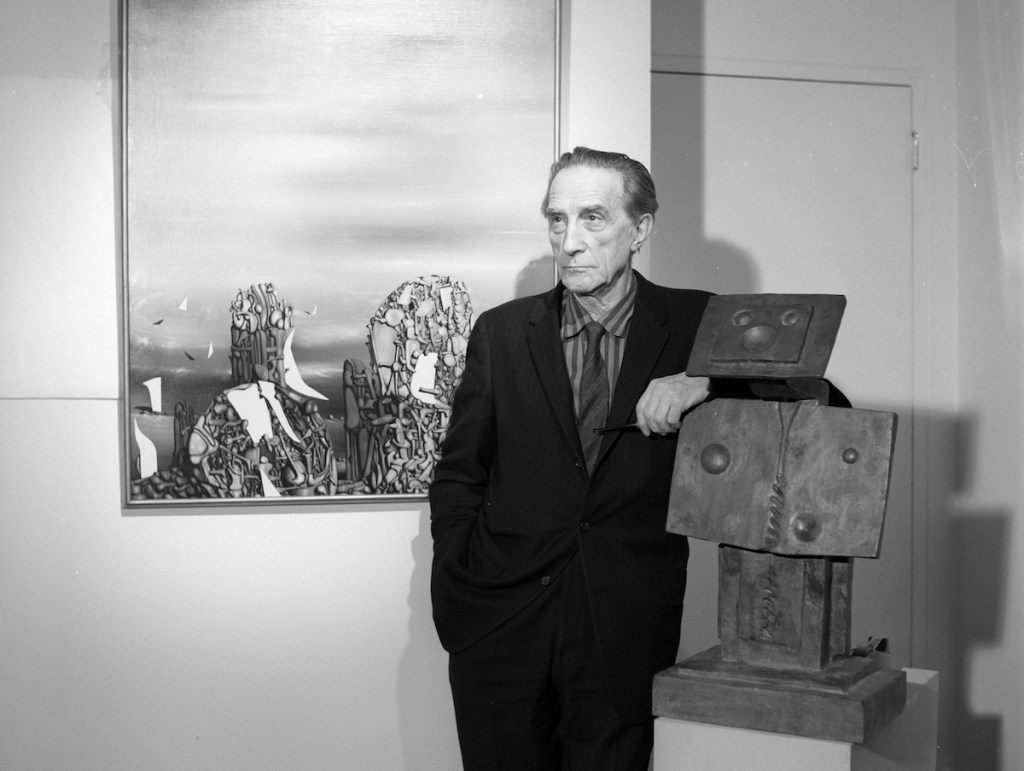The US will get its first Marcel Duchamp retrospective in more than half a century next year, in what is already poised to be one of 2026’s most high-profile museum exhibitions.
With a checklist numbering nearly 300 objects, the exhibition is being organized by the Museum of Modern Art in New York and the Philadelphia Museum of Art, and will be curated by MoMA’s Ann Temkin and Michelle Kuo and the Philadelphia Museum’s Matthew Affron. It will debut in New York on April 16, 2026, before opening in the fall in Philadelphia.
After that, the mega-retrospective will travel to Paris, in a presentation co-produced by the Centre Pompidou and the Grand Palais in 2027. Because the Centre Pompidou is closed for renovations, the exhibition will appear at the Grand Palais.
Related Articles

One goal of the show is to suggest that although we talk often about Duchamp, there’s still more to learn about him. “Duchamp remains mysterious,” Kuo wrote in an email. “The totality of his oeuvre still isn’t well known. What is talked about most often is only the tip of the iceberg, and his diverse body of work leaves much to be investigated. Duchamp changed the very definition of the artist. And he changed the very definition of art from something that issues forth meaning to something whose meaning depends on how it is received.”
It’s the first time any American institution has endeavored to survey every aspect of Duchamp’s practice since 1973, the year that both MoMA and the Philadelphia Museum debuted another retrospective for the artist. And though Duchamp is widely acknowledged as one of the most influential figures for artists working today, retrospectives for him are exceedingly rare. When the MMK Frankfurt did its own Duchamp retrospective in 2022, it was billed as the first show of its kind in two decades.
But this exhibition is particularly unusual in that it will appear in both the US and France, the two nations where Duchamp was a citizen. “It was important for him, this going back and forth,” said Affron, the Philadelphia Museum curator. “It was part of who he was and how he chose to have his career on school. So any complete retrospective of Duchamp is going to have to tell the story of his transatlantic life.”
Duchamp hailed from France, where, during the early years of the 20th century, he began painting works that appeared to represent figures formed from cascades of mechanical parts, like an industrial take of Cubism. His famed painting Nude Descending a Staircase, No. 2 (1913) scandalized audiences in France, but it made its greatest mark in the US, where, at the 1913 Armory Show in New York, it helped kickstart American modernism. The painting is currently owned by the Philadelphia Museum but will make its way to MoMA in 2026, the first time since 1973 that the work has visited that New York institution.

Marcel Duchamp, Fountain, 1950 (replica of 1917 original).
Philadelphia Museum of Art
The artist then went on to become one of the key figures of the Dada art movement, conceptualizing what he called readymades, or everyday objects that he lured into galleries with few changes and deemed artworks in their own right. These works are prized for the pesky sense of humor Duchamp infused in all of his art, which made heavy use of wordplay and visual puns.
Affron said the 2026 retrospective’s “beating heart” will be a section devoted to Duchamp’s “Boîte-en-Valises,” portable pieces that contained mini versions of his readymades. “It’s really a new way of replicating your own work,” Affron explained. The exhibition will present these boxes alongside archival materials that remained in Duchamp’s studio, affording a rare view into the artist’s process for making these works.
The forthcoming retrospective’s lengthy checklist includes nearly all of Duchamp’s most famous works: Fountain, his 1917 readymade formed from a urinal tipped on its side; L.H.O.O.Q., his 1919 piece involving a postcard of the Mona Lisa with a mustache and goatee drawn onto her face; Anemic Cinema, a 1926 film that counts as a landmark within experimental cinema. But two key works by Duchamp—The Large Glass (1915–23) and his final work, Étant donnés (1946–66)—will not leave the Philadelphia Museum, which owns them, and therefore will not be seen in New York or Paris.

Marcel Duchamp, L.H.O.O.Q., 1919
Private Collection
In 1973, when the New York Times covered the opening of the last Duchamp retrospective, James R. Mellow remarked that “the cult of Duchamp will always be a cult of true and ardent believers.” Affron said that cult does not appear to be going away because, each decade, it simply becomes fascinated with a new part of Duchamp’s oeuvre.
“In the ’50s, I think it was an aspect of Duchamp that was involved in assemblage art and collage and those sorts of things,” Affron said. “In the ’60s, some aspects of the conceptual Duchamp came to the fore. In the ’80s, Duchamp’s plays with notions of gender and the way gender intersects with the creative personality became very important.”
What will interest in the Duchamp cult in 2026? Affron was loath to speculate, saying only, “Every generation gets the Duchamp that it wants.”
“Duchamp’s revolutions are everywhere with us today,” Temkin, the MoMA curator, wrote in an email. “Whenever anyone asks ‘Why is this art?’—they are asking this in Duchamp’s wake. Duchamp’s work touches upon the importance of chance, questions of skill and deskilling, the art market, the role of the human and the machine, and the definition of originality and authorship. Duchamp—along with the turmoil of the 20th century—is still with us.”

Marcel Duchamp, Bicycle Wheel, 1951 (third version, after lost original of 1913).
The Museum of Modern Art, New York

